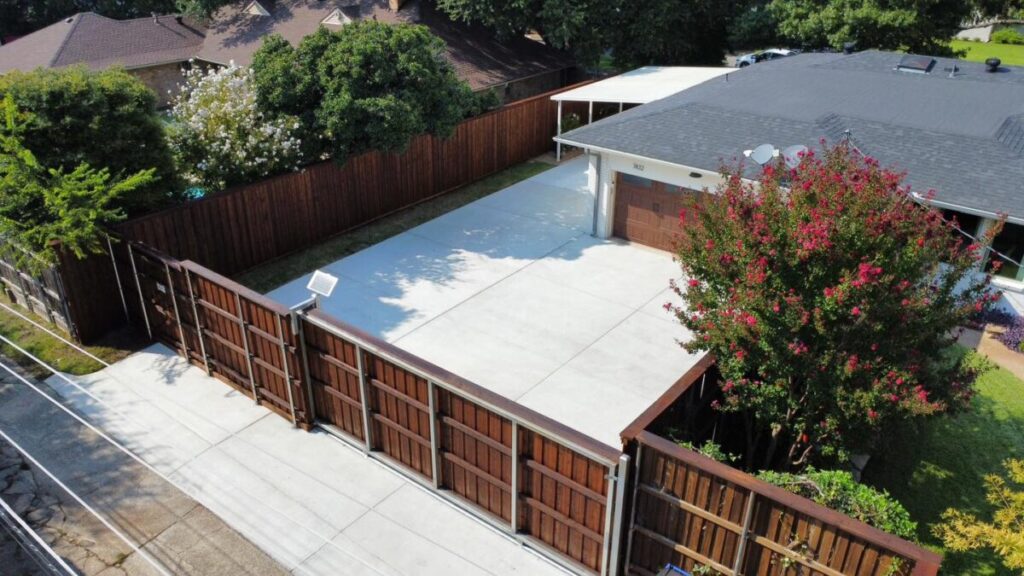When Concrete Cracks: Recognizing Damage Beyond Repair
That thin crack snaking across your driveway might seem innocent enough at first glance. Perhaps you’ve noticed how rainwater pools in the low spots on your patio, or maybe the concrete steps leading to your front door have started to crumble at the edges. These aren’t just cosmetic issues that you can ignore until spring cleaning rolls around. They’re your property speaking to you, warning that something more significant might be brewing beneath the surface.
Diamond Exteriors has spent years helping property owners understand the difference between concrete that needs a touch-up and concrete that’s reached the end of its functional life. The distinction matters more than you might think, both for your safety and your wallet. While minor surface cracks can sometimes be sealed and forgotten, deeper structural damage requires a more decisive approach.
Concrete damage rarely announces itself with fanfare. Instead, it creeps up gradually through daily exposure to freeze-thaw cycles, ground movement, water infiltration, and the simple passage of time. Understanding what you’re looking at makes all the difference between a quick fix and a complete replacement.

The Warning Signs That Demand Attention
Surface cracks wider than a quarter-inch tell a story about what’s happening underneath. When concrete develops these broader fissures, water has already found its way into the material’s porous structure. During winter months, that water freezes, expands, and pushes the concrete apart from within. Come summer, the gaps remain, ready to collect more moisture and repeat the destructive cycle.
Spalling represents another red flag that homeowners often dismiss too quickly. This flaking or chipping of the concrete surface might look like simple weathering, but it actually indicates that the internal structure has been compromised. Once the protective surface layer breaks down, the aggregate and reinforcement beneath become exposed to the elements, accelerating deterioration exponentially.
Settling and displacement create more than just trip hazards, though those safety concerns alone warrant immediate action. When sections of your concrete slab sink or shift relative to adjacent areas, the underlying soil has either eroded or compacted unevenly. This foundational instability means that no amount of surface patching will restore structural integrity.
Understanding the Point of No Return
Many property owners wonder whether they should attempt repairs before considering full replacement. The honest answer depends on how much of the concrete shows distress. Research from the American Concrete Institute suggests that when damage affects more than thirty percent of a concrete surface, replacement becomes more cost-effective than extensive patching. Repairs on severely damaged concrete rarely last more than a few years, turning into an endless cycle of temporary fixes.
Drainage problems compound existing damage and predict future failures. If water consistently accumulates on your concrete surfaces or you notice erosion along the edges, the installation likely lacks proper grading or subsurface preparation. Attempting to repair the concrete without addressing these drainage issues simply postpones the inevitable while allowing water damage to spread.
The age factor matters too. Concrete typically maintains its structural integrity for twenty-five to thirty years under normal conditions. As it approaches this lifespan, the material becomes increasingly brittle and prone to failure. Combining advanced age with visible damage creates a clear case for new installation rather than patchwork repairs.
Making the Right Choice for Your Property
Choosing between repair and replacement isn’t just about current damage assessment. Consider how you use the space and what you need from it going forward. A new installation offers opportunities to improve drainage, update the layout, or incorporate modern materials that offer better longevity and performance than older concrete formulations.
Diamond Exteriors approaches every concrete evaluation with transparency and expertise. We’ll walk your property with you, explain exactly what we’re seeing, and help you understand your options without pressure or overselling. Sometimes repair makes perfect sense. Other times, starting fresh gives you better value and peace of mind for decades to come.
Your concrete serves as the foundation for countless daily activities, from parking your vehicles to welcoming guests at your doorstep. When it shows signs of serious damage, addressing the problem properly protects both your investment and everyone who uses the space. Ready to get a professional assessment of your concrete concerns? Reach out to Diamond Exteriors today, and let’s discuss the best path forward for your property.
